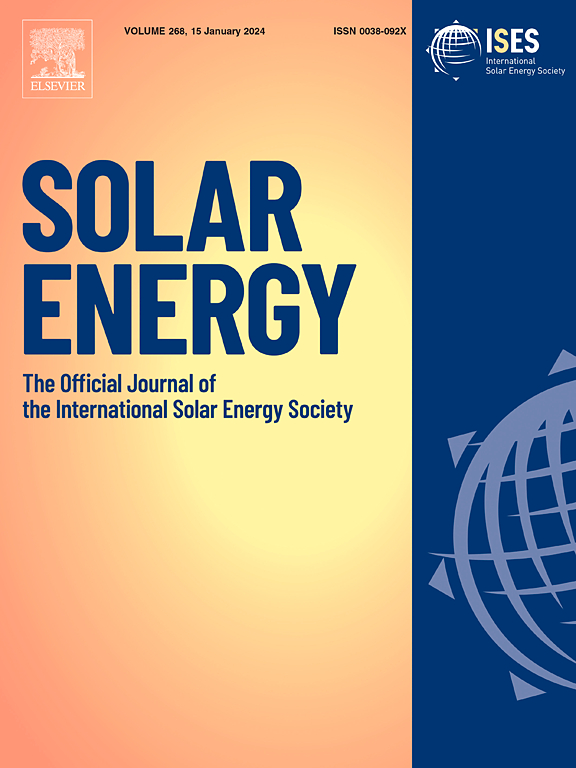Role of carrier delocalization in enhancing the photostability and defect passivation of 2D/3D hybrid metal halide perovskites
IF 6
2区 工程技术
Q2 ENERGY & FUELS
引用次数: 0
Abstract
Photodegradation and defect passivation of hybrid metal halide perovskites are still challenges toward related highly stable optoelectronic devices such as solar cells. Herein, we show that photodegradation and defect density can be drastically reduced in 2D/3D perovskites by engineering the conditions for carrier delocalization. For this purpose, conjugated, partially conjugated and non-conjugated spacer molecules of similar sizes as well as n values have been systematically changed in 2D/3D perovskites based on archetypical MAPbI3. The decrease of calculated HOMO-LUMO gaps of complexes with spacer molecules (EHL-complex) correlated well with the decrease of the Urbach energy, the decrease of the trap-state density, and the strong reduction of photodegradation of 2D/3D perovskite films, whereas the photodegradation was practically independent of the n value for conjugated spacer molecules. In addition, the short circuit current density (Jsc) and open circuit voltage (Voc) of the prepared solar cells increased with decreasing EHL-complex; hence, maximum initial values of Jsc and Voc larger than those of identically prepared reference solar cells based on 3D MAPbI3 were reached. We also demonstrate that the photodegradation of solar cells decreased monotonously with increasing initial power conversion efficiency. Thus, delocalization by optimum coupling of electron wavefunctions between conjugated spacer molecules and binding moieties at the perovskite enhances defect passivation and strongly reduces photodegradation in 2D/3D perovskites.
载流子析出在增强二维/三维混合金属卤化物过氧化物的光稳定性和缺陷钝化中的作用
混合金属卤化物包晶的光降解和缺陷钝化仍然是太阳能电池等相关高稳定性光电设备所面临的挑战。在此,我们展示了通过对载流子脱焦条件进行工程设计,可大幅降低二维/三维包晶的光降解和缺陷密度。为此,我们系统地改变了基于典型 MAPbI3 的 2D/3D 包晶石中类似大小和 n 值的共轭、部分共轭和非共轭间隔分子。计算得出的带有间隔分子的复合物(EHL-复合物)的 HOMO-LUMO 间隙的减小与厄巴赫能的减小、阱态密度的减小以及二维/三维包晶薄膜光降解的强烈减弱密切相关,而共轭间隔分子的光降解实际上与 n 值无关。此外,所制备太阳能电池的短路电流密度(Jsc)和开路电压(Voc)随 EHL-复合物的减少而增加;因此,Jsc 和 Voc 的最大初始值大于基于三维 MAPbI3 制备的相同参考太阳能电池的初始值。我们还证明,太阳能电池的光降解随初始功率转换效率的增加而单调减少。因此,通过共轭间隔分子与包晶结合分子之间电子波函数的最佳耦合实现的去局域化增强了二维/三维包晶的缺陷钝化,并大大减少了光降解。
本文章由计算机程序翻译,如有差异,请以英文原文为准。
求助全文
约1分钟内获得全文
求助全文
来源期刊

Solar Energy
工程技术-能源与燃料
CiteScore
13.90
自引率
9.00%
发文量
0
审稿时长
47 days
期刊介绍:
Solar Energy welcomes manuscripts presenting information not previously published in journals on any aspect of solar energy research, development, application, measurement or policy. The term "solar energy" in this context includes the indirect uses such as wind energy and biomass
 求助内容:
求助内容: 应助结果提醒方式:
应助结果提醒方式:


